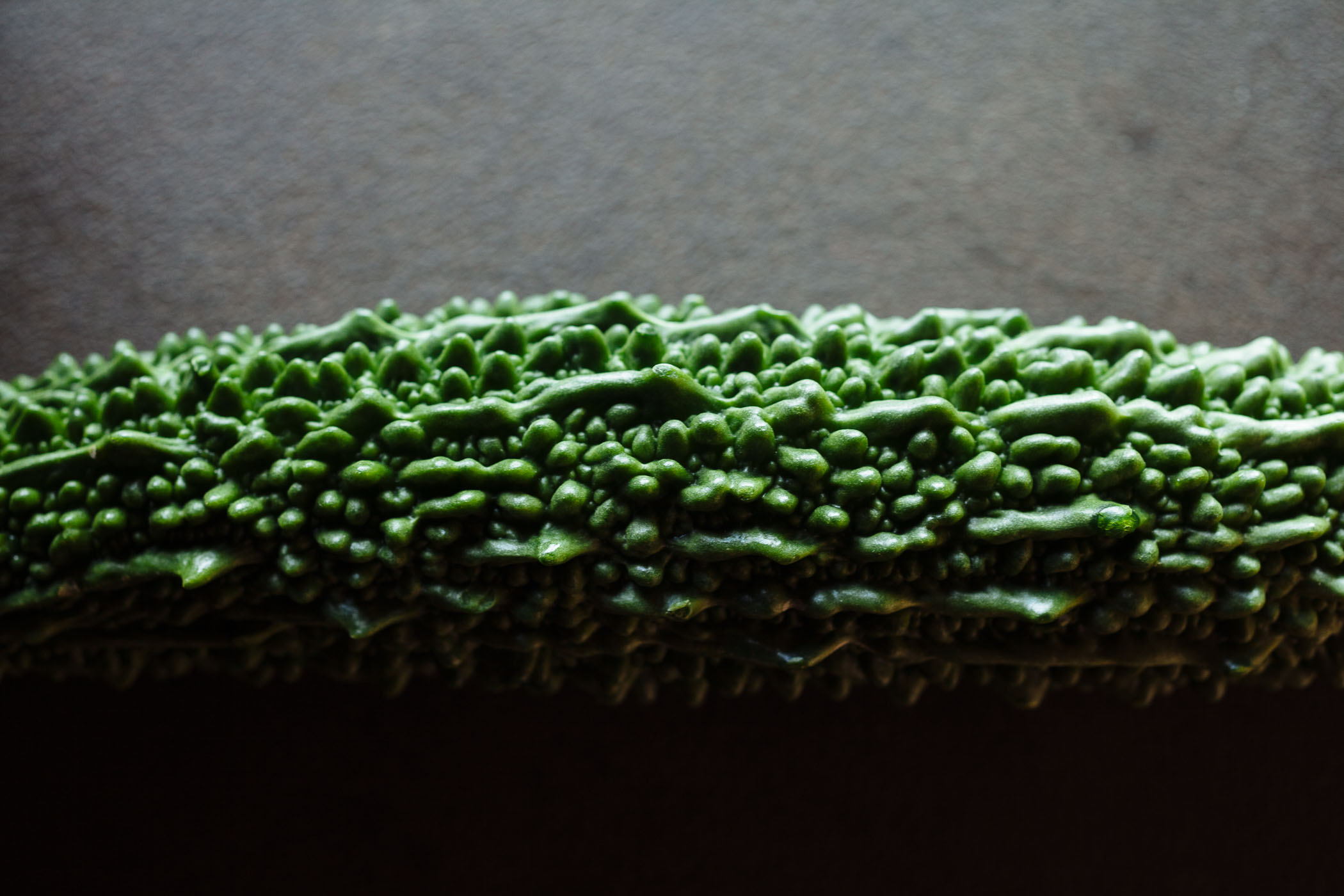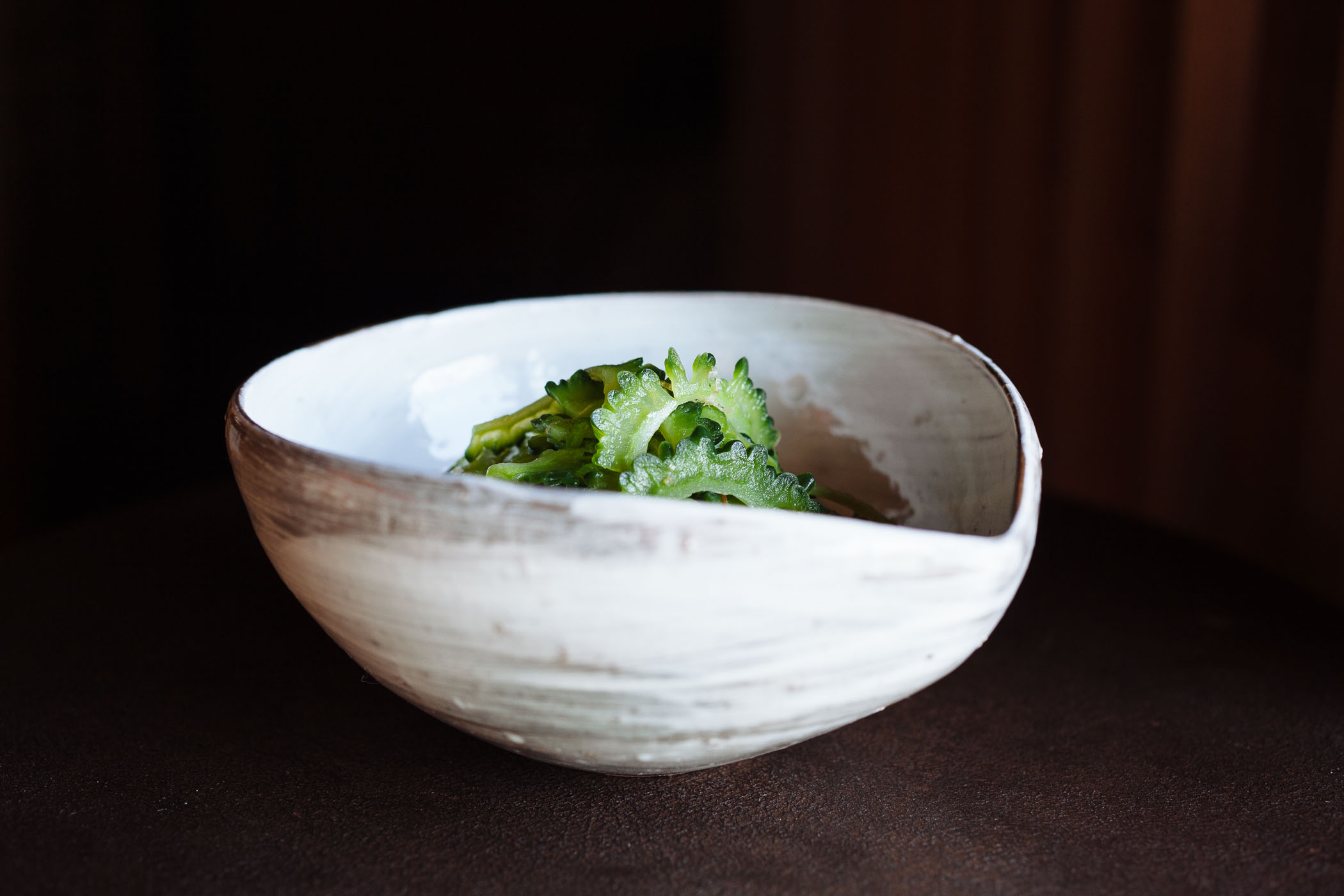Bitter melon is an antidote to the ennui of high summer

Goya’s green is as thick and dark and endless as the suffocating green of summer. The bitter melon is fat like a overgrown zucchini with knurled skin and bitter flesh. I haven’t always loved goya, but when I met Tsutomu Sasaki, who grows exquisite goya, I was so taken by their beauty and the pride with which he spoke about growing them with his grandfather, that I was determined to find a way to love them as much as he does. And now any day that I can find Sasaki’s goya at the market, I buy it.
Washoku teaches us to first cut, then simmer. The choice of cut is the first decision in cooking. It has a pronounced effect on the texture of the final bite. There isn’t one correct way but rather it’s the cook’s work to understand the differences, make a decision, and proceed accordingly. I slice the goya in half lengthwise and scoop out the seeds and pulp. With the blade perpendicular to the hollowed out goya, I begin a series of sweeping cuts. An exquisite rhythm emerges as the sharp blade circles round and round leaving a row of C shaped slivers in its wake. The slicing is meditative. Kiriaji describes a knife’s sharpness. It’s a word that expresses a notion best translated as “the taste of the cut.” It can be felt in a relaxed wrist and grip as a good sharp blade travels primarily on the force of only its own weight. It can be heard too. A sharp blade exhales a smooth, crisp whoosh as each slice cleaves easily. A dull blade, in contrast, requires the force of a tight grip. It crushes with a thuggish crunch and lands with a dead thud on the cutting board.
Yoneo Mukoh, a local veteran Japanese blade craftsman taught me to understand the anatomy of a good blade. He worked for years fashioning mizu-honyaki, water-quenched pure carbon steel blades, in Sakai, a city outside of Osaka that has been at the heart of Japan’s blade making for centuries. Now well into his eighties and again living in his hometown, he continues to forge knives in a soot blackened workshop on Kabeshima, a windy island west of Karatsu full of onion fields and citrus groves. He pounds, quenches, and tempers towards a balance of flexibility at the spine and strength at the cutting edge. A good blade applies the least pressure possible in order to preserve the integrity of an ingredient’s fibers and in turn its quality of aesthetics and flavor. One side is beveled to slice, the other appears flat but is imperceptibly concave so as to release quickly.
I finish slicing Sasaki’s goya with Mukoh’s blade, the work of their hands now in mine. When the hands of the cook know the farmer or the fisherman, they inevitably work with greater care. The strand that binds the producer to the cook to the diner is threaded through the eye of the earth and with a more holistic view of food I think we’ll be better stewards of the source of every delicious thing we adore. In the West, we are finally catching up, or rather circling back with new intention and purpose, to eating seasonal ingredients, a philosophy and practice that has been at the core of Japanese cuisine for a very long time. Seasonal ingredients are the most flavorsome versions of themselves, made all the sweeter and richer when we earn them with patience. Japanese cuisine mandates that each meal must express the voice of the season. This is not a fearful mandate but rather common sense. What is ripe now in the place we live is what is most delicious and will suit our constitution fashioned of the same light and air. At the summit of summer, goya isn’t just delicious, it tastes essential. The green bitter melon is an antidote to the heat induced ennui of high summer, a jolt of vitality felt to the extremity of each limb, like roots reaching far into fertile soil.
